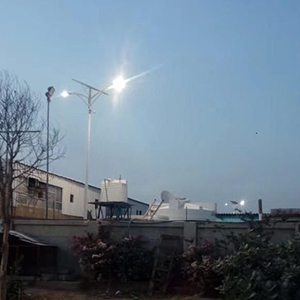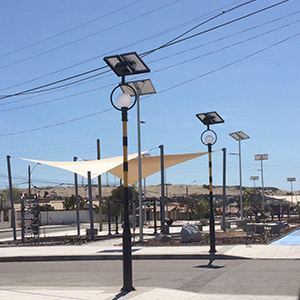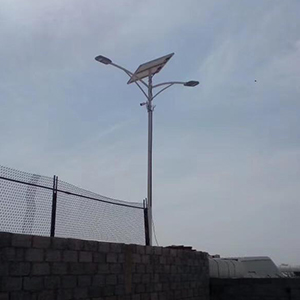10m 100w Solar Street Light With Lithium Battery










1. Urban Areas:
Solar street lights are used in cities to illuminate streets, parks and public spaces, improving safety and visibility at night.
2. Rural Areas:
In remote or off-grid areas, solar street lights can provide necessary lighting without requiring extensive electrical infrastructure, thereby improving accessibility and safety.
3. Highways and Roads:
They are installed on highways and main roads to improve visibility for drivers and pedestrians and reduce the risk of accidents.
4. Parks and Recreation Areas:
Solar lights enhance safety in parks, playgrounds and recreation areas, encourage nighttime use and community engagement.
5. Parking Lot:
Provide lighting for the parking lot to improve the safety of vehicles and pedestrians.
6. Roads and Trails:
Solar lights can be used on walking and biking trails to ensure safe passage at night.
7. Security Lighting:
They can be strategically placed around buildings, homes and commercial properties to deter crime and enhance security.
8. Event Venues:
Temporary solar lighting can be set up for outdoor events, festivals and parties, providing flexibility and reducing the need for generators.
9. Smart City Initiatives:
Solar street lights combined with smart technology can monitor environmental conditions, traffic, and even provide Wi-Fi, contributing to smart city infrastructure.
10. Emergency Lighting:
In the event of power outage or natural disaster, solar street lights can be used as a reliable emergency lighting source.
11. Educational Institutions:
Schools and universities can use solar street lights to illuminate their campuses and ensure the safety of students and staff.
12. Community Development Projects:
They can be part of community development initiatives aimed at improving infrastructure and quality of life in underserved areas.




















